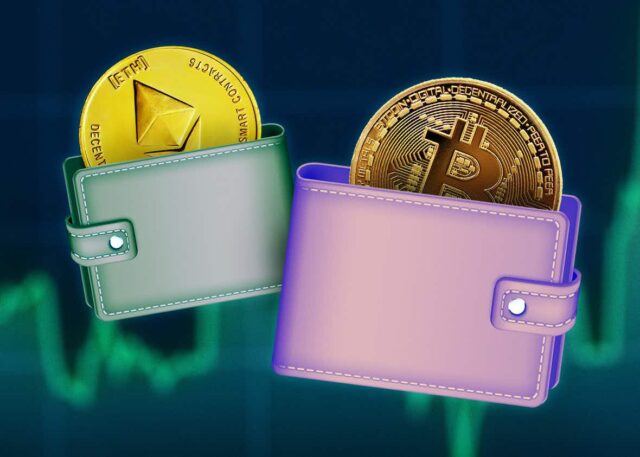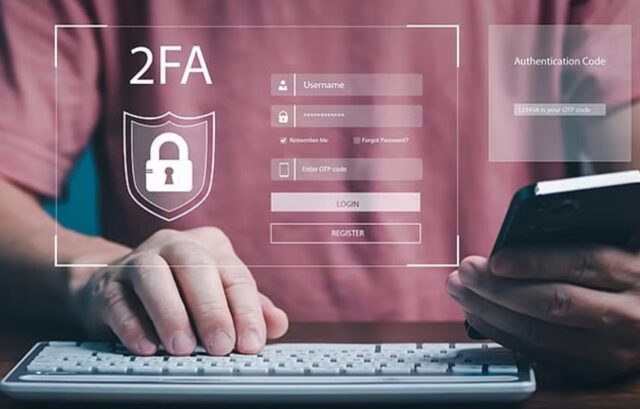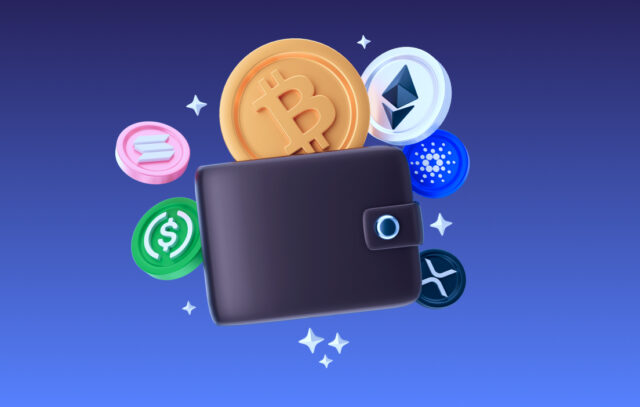
A crypto wallet, often fortified with multi-signature security, acts as a fortified fortress for your digital riches. It’s a cryptographic keyring guarding access to your cryptocurrencies with unparalleled precision. From the convenience of mobile wallets to the security of hardware wallets, these tools empower users to interact with the blockchain on their terms.
On the flip side, crypto exchanges are bustling marketplaces where traders converge to swap their digital treasures. Decentralized exchanges (DEXs) and centralized counterparts are hubs of liquidity, where cryptocurrencies change hands at lightning speed. Complex order types, from limit orders to stop-loss orders, define the strategies employed by traders.
What Are Crypto Wallets?

A crypto wallet, short for cryptocurrency wallet, is the cornerstone of the digital asset universe. It serves as a secure digital container, safeguarding your cryptocurrencies and enabling you to manage, store, and interact with them on the blockchain. Understanding crypto wallets and their primary functions is essential for anyone venturing into the world of cryptocurrencies.
At its core, the primary function of a crypto wallet is to store and manage cryptographic keys, which are essential for accessing and controlling your cryptocurrencies. These keys come in two forms:
Public Key: This key serves as your wallet’s address on the blockchain. It’s akin to your account number in traditional banking. Others can use your public key to send cryptocurrencies to your wallet.
Private Key: The private key, on the other hand, is a closely guarded secret. It’s your digital signature, allowing you to access and authorize transactions from your wallet. Losing your private key can mean losing access to your funds permanently.
Differentiating Hot Wallets and Cold Wallets:
Crypto wallets can be categorized into two main types: hot wallets and cold wallets. Each has its own set of characteristics and use cases:
Hot Wallets: Hot wallets are online wallets that are connected to the internet. They provide quick and convenient access to your cryptocurrencies, making them suitable for daily transactions and trading. However, they are more susceptible to hacking and online threats due to their constant internet connectivity. Examples of hot wallets include mobile wallets, web wallets, and exchange wallets.
Cold Wallets: Cold wallets, in contrast, are offline storage solutions, specifically designed to maximize security. They are not connected to the internet, reducing the risk of cyberattacks. Cold wallets come in various forms, including hardware wallets (physical devices), paper wallets (physical documents with key information), and even brain wallets (memorized private keys). Cold wallets are ideal for long-term storage and safeguarding large sums of cryptocurrencies.
Setting up a crypto wallet is a crucial step for anyone entering the world of cryptocurrencies. It’s akin to creating a digital vault to store and manage your digital assets securely. Here’s a step-by-step guide on how to set up a crypto wallet:
Choose the Right Wallet Type:

Start by selecting the type of wallet that suits your needs. Common options include mobile wallets, desktop wallets, web wallets, hardware wallets, and paper wallets. Consider factors like convenience, security, and how you plan to use your wallet.
Research and Select a Wallet Provider:
There are numerous wallet providers in the crypto space. Research and choose a reputable one. Look for user reviews, security features, and the cryptocurrencies supported by the wallet, such as Cryptomus, where you can create multiple wallets for various cryptocurrencies.
Download or Access the Wallet:
Depending on your chosen wallet type, either download the wallet software or access it through a web browser. Ensure you’re using the official website or app to avoid scams.
Create a New Wallet:
Follow the wallet provider’s instructions to create a new wallet. This typically involves generating a new wallet address and a private key. Make sure to create a strong and unique password.
Secure Your Private Key:
Your private key is the most critical component of your wallet. Store it securely and never share it with anyone. Options include writing it down on paper and storing it in a safe place, using a hardware wallet to keep it offline, or memorizing it (for brain wallets).
Back-Up Your Wallet:
Most wallets offer a backup feature. Follow the instructions to create a backup of your wallet. This backup can be crucial if you ever lose access to your wallet or device.
Using a Crypto Exchange

Using a crypto exchange effectively is essential to buy, sell, or trade cryptocurrencies efficiently and securely. Here’s a step-by-step guide on how to use a crypto exchange:
Account Creation:
Start by creating an account on the chosen crypto exchange. You’ll typically need to provide your email address, create a secure password, and complete any identity verification requirements.
Identity Verification (KYC):
Some exchanges require Know Your Customer (KYC) verification to comply with legal regulations. This may involve providing personal identification documents such as a passport or driver’s license.
Secure Your Account:
Enable two-factor authentication (2FA) to add an extra layer of security to your account. Use a 2FA app like Google Authenticator or receive codes via SMS.

Deposit Funds:
To start trading, you’ll need to deposit funds into your exchange account. Each exchange provides a unique deposit process. Common options include bank transfers, credit/debit card deposits, and cryptocurrency transfers from other wallets.
Explore the Trading Interface:
Familiarize yourself with the exchange’s trading interface. You’ll find features like order books, price charts, and trading pairs (e.g., BTC/USD). Understand the different order types, such as market orders and limit orders.
Place an Order:
Decide whether you want to place a market order (buy or sell at the current market price) or a limit order (set a specific price at which you want to buy or sell). Enter the necessary details, including the amount and price, and confirm the order.

Monitor Your Trades:
Keep an eye on your open orders and trade history. You can track the progress of your trades on the exchange’s trading interface.
Withdraw Funds:
When you want to move your funds out of the exchange, initiate a withdrawal. Provide the recipient address for the cryptocurrency you’re withdrawing, and confirm the withdrawal.
Security Best Practices:
Regularly update your account password and enable email notifications for account activity. Be cautious of phishing attempts and suspicious emails.
Stay Informed:
Keep yourself informed about the cryptocurrency market, news, and price movements. This knowledge will help you make informed trading decisions.

Tax Considerations:
Understand the tax implications of your crypto activities in your jurisdiction. Keep records of your trades and transactions for tax reporting purposes.
Risk Management:
Crypto markets can be highly volatile. Use risk management strategies, like setting stop-loss orders, to mitigate potential losses.
Additional Features:
Explore any additional features offered by the crypto wallet and exchange platforms, such as margin trading, staking, or lending, if they align with your trading strategy.

Customer Support:
If you encounter issues or have questions, don’t hesitate to contact the exchange’s customer support for assistance.














